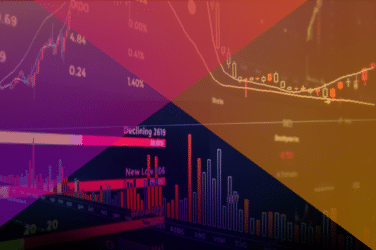Five Trends That Will Shape Financial Markets in 2020 and Beyond
By Mark Pumfrey, Global Head of Equities, Liquidnet
Financial markets have changed beyond recognition in the past decade. Some trends, such as greater efficiency and transparency, were inevitable given the pace of technological and regulatory change. Yet they appear to have caught vast swathes of the markets off-guard, meaning that many firms are entering the next decade with highly challenged business models. In response to these challenges, some firms are making the hard decision of exiting businesses which are no longer profitable. Others are resorting to M&A to fend off the competitive threat. The world around us continues to shift, however, and requires a response to not only changes that have already happened, but also to those that are just around the corner. Some of these present real threats to business models, while others present opportunities ready to be unlocked. As buy-side and sell-side boardrooms ponder these issues and set their strategies for the year ahead, here are five trends which I believe will shape their thinking and therefore financial markets for 2020 and beyond.
1. Pooling liquidity
Against a challenging macro backdrop, the rising cost of market data, and the emergence of newer, nimbler and (typically) technology-driven competitors, buy-side and sell-side firms will increasingly pool together to combine their liquidity in the interest of sourcing the best prices for their trades at the lowest market impact. The biggest driver of this trend is self-interest. While relationships will still play an important role in the buy-side and sell-side dynamic, the availability of data and information which is measurable, means that such relationships can no longer be exclusive. While requiring a mentality shift in the short-term, the impact will be a deeper and more liquid market and better price discovery process, a positive for all involved.
2. Illiquid market research
Data and analytics will continue to impact the provision of research, changing the supply-side dynamics. What started with MiFID is forcing sell-side firms to think deeply about matching research with demand. They increasingly use analytics to make fact-based decisions about whether they need to be one of 20-30 institutions covering a large cap stock. We hear a lot about the shrinking research industry, but this need not be the case. One of the positive unintended consequences of MiFID could be that of forcing sell-side firms to broaden the availability of research beyond large cap stocks. Given the lack of liquidity in smaller stocks this may not generate profits in the short term, but by using technology to disseminate that research to the ideas-hungry asset managers looking for alpha, they could make themselves more relevant to their client base and, in doing so, improve the depth of capital markets.
3. Globalism vs nationalism
A worrying trend of the past few years has been the rise in nationalism which, due to the trade war between the world’s two largest economies, could soon find itself impacting trading and investing more profoundly. The reason why this is significant is that it goes counter to the notion (often taken for granted) that capital markets function best when there are no barriers to trading and investing, resulting in an efficient allocation of capital around the world. Investors and traders caught in the trade war rhetoric and reality could soon see their capital allocated inefficiently, as countries are forced to choose sides, and thus miss out on opportunities to generate alpha by accessing high growth markets. Finding bright spots of liquidity which help circumnavigate the trade war waters will be a real competitive advantage for asset managers and an opportunity for those facilitating that access.
4. Shrinking public markets
Despite the multi-billion-dollar tech company listings we have seen over the past few years, the role of public markets is diminishing, and this has stark consequences for efficient capital allocation. Financial engineering through practices such as share buybacks among public companies are reducing the availability of public shares available to investors. Similarly, the availability of cheap finance thanks to a prolonged period of monetary experimentation and ultra-low interest rates, means more companies end up in private equity hands. These two trends are leading investors to sacrifice liquidity for yield and therefore towards riskier investments. The trend towards transparency and efficiency may soon catch-up with private capital markets which are ripe for disruption, however some asset managers may get caught out in this inefficient market through their search for yield.
5. Adding meaning to ESG through data
Technology and greater analytics will continue to change the world of investing and could present an opportunity for firms looking to provide meaning to the ESG investment process. There is clearly a gap in the consistency and applicability of third-party benchmarks which is leading many asset managers to develop their own proprietary benchmarks for ESG that may differ from industry to industry. This is a positive development for capital markets because it ensures a more proportionate response to the ESG challenge, while allowing investors to generate returns in harmony with their end investors’ values and beliefs.
While these trends may not seem interconnected at first, for buy-side and sell-side boardrooms connecting the dots, they present an important step towards improving the performance of active managers, enabling them to take bold, and contrarian, views – the lifeblood of well-functioning capital markets. With sources of information which are measurable, and availability of technology and platforms to facilitate this process, there is room for buy-side and sell-side firms to thrive in an environment ripe with opportunity.






